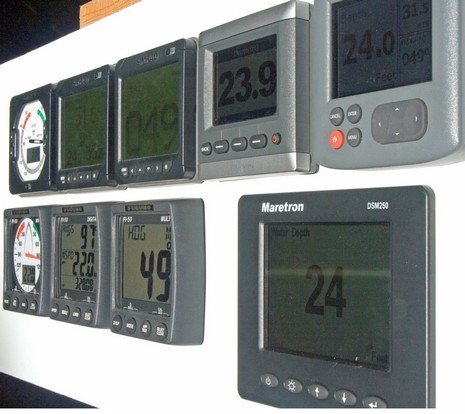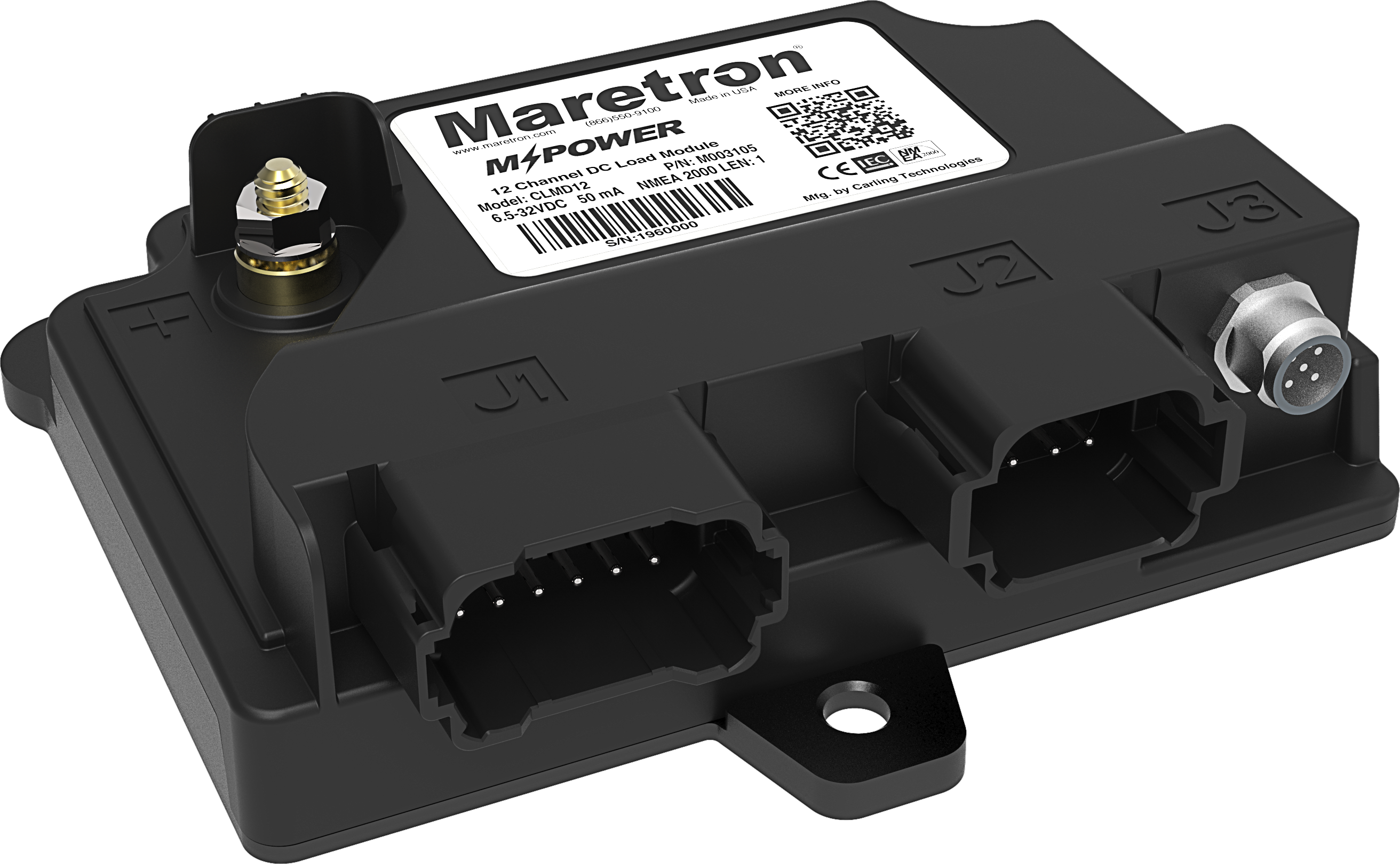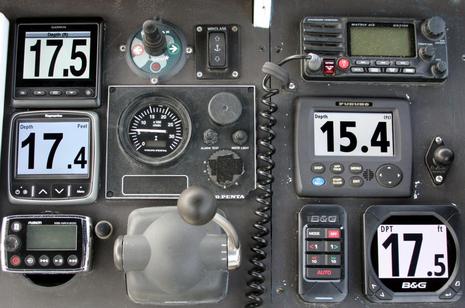N2k instruments, in direct sun

This is the collection of NMEA 2000 instruments I’ve been testing for several months, but here they’re shown in direct sun light (at about 45N latitude, but this afternoon, darn near solstice). Pop up a bigger image of the shot above to see how different they look than when in the shade of a pilot house (or electronics lab). When photographing these screens in controlled lighting I have to turn down the brightness of both the Garmin GMI 10 and the Maretron DSM 250 so they don’t blow out the others, but look what happens here, with everything at maximum brightness (or in the Furuno case, automatic brightness). The transflective Raymarine ST70 is at least on a par with the two other color screens, and the Furuno FI-50s are in a class by themselves, though I think they use the least power of the bunch.
The photo above is pretty darn close to what the instruments actually looked like, except for that gray banding on the Simrad IS20s, which was not apparent to the human eye (and I should have cleaned the Maretron screen). I did switch the color displays to numeric data so they’re more directly comparable to the gray scale screens, and then shot them at a sharp angle as seen below and bigger here. Yup, the Furuno OLED screens stood out again. But mind you, they’re darn hard to get right now and are also are the least graphic of the lot. You’ll find more detail on each of these instruments by searching Panbo, but I also attempted to summarize their differences, including their various screen readability strategies, in my July PMY column. The column, incidentally, was prefaced by a June PMY feature on NMEA 2000 cabling that might be the geekiest piece I’ve ever gotten in a general circulation boating magazine. Not that this stuff isn’t important, but who else would publish a two-page spread of cables and tees? It’s been eight years now, but I still appreciate the freedom and support I get from Power & Motoryacht.














Ben, your July PMY article is BRILLIANT. There should be a marine literary award in there for you on this one!
Your link to the shady view of the instruments is actually to the full-sun view:
“Pop up the bigger image to see how different they look than when in the shade of a pilot house (or electronics lab).”
Your link to the shady view of the instruments is actually to the full-sun view:
“Pop up the bigger image to see how different they look than when in the shade of a pilot house (or electronics lab).”
Have you looked at the lifetime of the OLED displays? Short lifetime is the primary reason OLED displays have been slow to reach the marketplace in consumer products. It would be good to know how long your (my) expensive new gear would be expected to last.
I know I can live with the lifetime of OLED displays being limited to 17,000 hours (as compared to 60,000 hours for LCD).
As OLED is used in small televisions now (large televisions are some years off), I am confused why the graphics capabilities of the display are limited. Is that a limitation of the software, or a way to get the display costs way down?
“A feature about data networking wires and related minutia? I can almost feel fingers flipping the page. But wait!” (June PMY column)
Can I share these links (June and July) with my sailing club ?